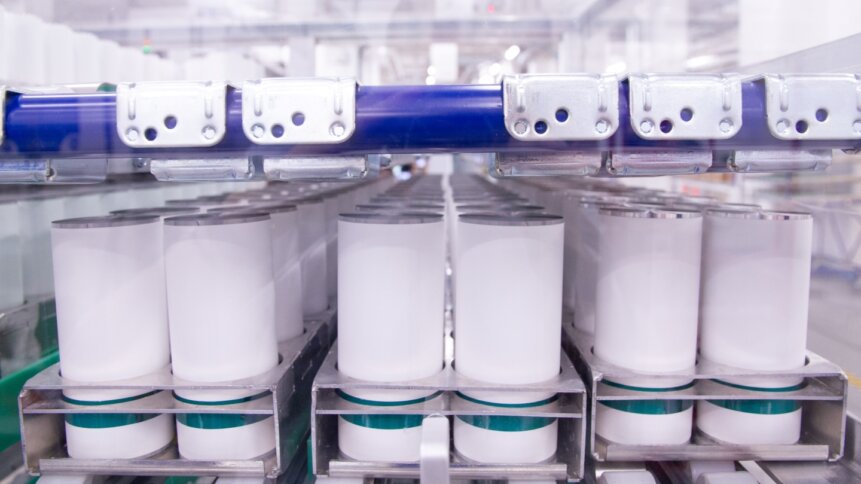Graphene on the charge to power up better batteries

Wisdom in the industry of materials says that it takes at least a couple of decades to go from discovery to market success, which suggests that graphene – a super-strong, highly conductive, two-dimensional form of carbon – could be getting close to finding its ‘killer app’. Dubbed the ‘wonder material’ and isolated in 2004 – using an ingenious method involving Scotch tape – by Andre Geim and Konstantin Novoselov at the University of Manchester in the UK, expectations for graphene were sky high. And that was before the duo received the Nobel Prize in Physics in 2010, which lit a rocket under the search for commercially viable applications.
Pathfinding nanotubes
Fast forward to today, which neatly steps over multiple false dawns in the business prospects for tiny, flat sheets of carbon, and graphene is now carving out a niche for itself in the energy sector. As it turned out, those in the know could have looked to carbon nanotubes – rolled up versions of graphene – for clues to the future success of flatter carbon flakes. Battery makers have jumped on the application of carbon nanotubes in their designs as a way of increasing the storage capacity of lithium-ion cells.
Tiny, tube-like nanostructures, which preceded graphene, are useful in battery technology thanks to their favorable combination of high surface area, high conductivity, and mechanical strength. Lattices of nanomaterials are flexible too, which allows structures to expand and contract with changes in temperature – useful in coping with battery charging and discharging cycles. Now, graphene developers are taking these appealing battery characteristics and applying them to supercapacitors, which could dramatically improve the lifetime of battery packs used to power electric vehicles.
Batteries, which store their electrical energy chemically, are ideal for scenarios where power is required at relatively low levels for longer periods of time. Shorter, more intense use cases, on the other hand, are the perfect match for supercapacitors, which harness their energy using an electric field. But with both options, the stored energy creates an electric potential, which can be tapped to drive components in a circuit.
Dream team
Applying these characteristics to electric vehicles, you can now see where the different technologies fit in. Batteries work perfectly well cruising along the road, but soon wear out if drivers make a habit of hard acceleration, which is where supercapacitors can step in to deliver strong, but short, bursts of power. Also, supercapacitors do a great job of quickly capturing electrical energy – for example, when drivers step on the brake and power is regenerated from the vehicle’s motors.
Firms looking to scale-up graphene production to target applications such as supercapacitors for automotive include Scotland’s Integrated Graphene, which announced plans last month to invest £8 million in expanding its 3D graphene foam technology. And it is by no means the only graphene provider to have supercapacitors on the radar. First Graphene – which has its R&D facility at the Graphene Engineering & Innovation Centre in Manchester, UK, not far from the labs of Geim and Novoselov – is also optimizing materials production to suit device manufacturers.
In Germany, Skeleton Technologies (which works with a form of carbon described as ‘curved graphene’) plans to invest EURO 220 million to build what it claims will be the ‘world’s largest supercapacitor factory’ in partnership with Siemens. Production at the facility is expected to start in 2024, and the company is well integrated into the transportation sector.
Not just for EVs
When Tesla acquired Maxwell Technologies – a US developer of energy storage and power delivery products – in 2019, there was speculation that supercapacitors could be finding their way into the US electric vehicle maker’s new models. But Tesla sold the company a couple of years later. And even if electric vehicles don’t turn out to be the breakthrough market for graphene, there’s no shortage of uses for supercapacitors featuring the nanomaterial.
Analyst firm IDTechEx, based in Cambridge, UK, has been watching the sector for a long time and notes that shipping facilities, specifically the cranes used to load and unload containers, require short bursts of power. And, like vehicles, cranes driven by electric motors also make use of energy harvesting schemes that work well with supercapacitors. Other applications include helping to power vehicles in cold climates, where regular batteries can lose as much as a third of their charge when temperatures drop.
Supercapacitors can help to stabilize the output from renewable energy grids that would otherwise fluctuate due to changes in wind and solar conditions. E-commerce robots are another interesting prospect for supercapacitors, as well as uses in fuel-cell powered vehicles, to help with energy management. Trams, buses, and rail infrastructure can also benefit from supercapacitors. And then there’s IT infrastructure too, in data centers, hospitals, and elsewhere, that can be protected from power outages thanks to uninterruptable power supply designs featuring high-performance supercapacitors.
Only time will tell whether graphene makes its mark in these markets, but the wisdom of the materials world says that we should find out soon.









